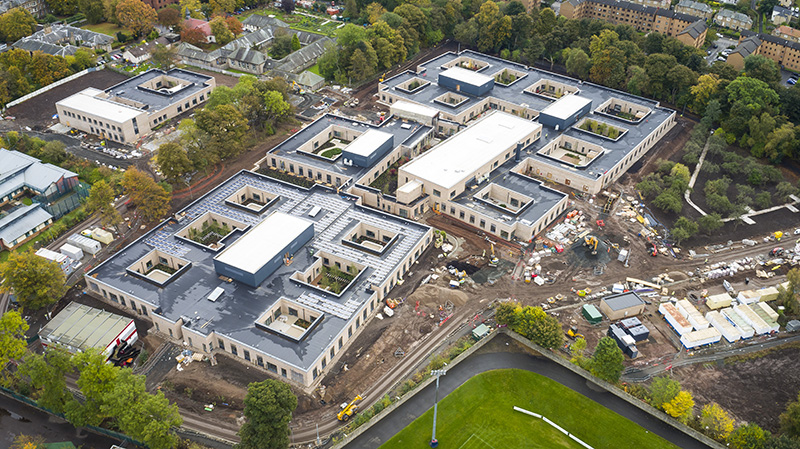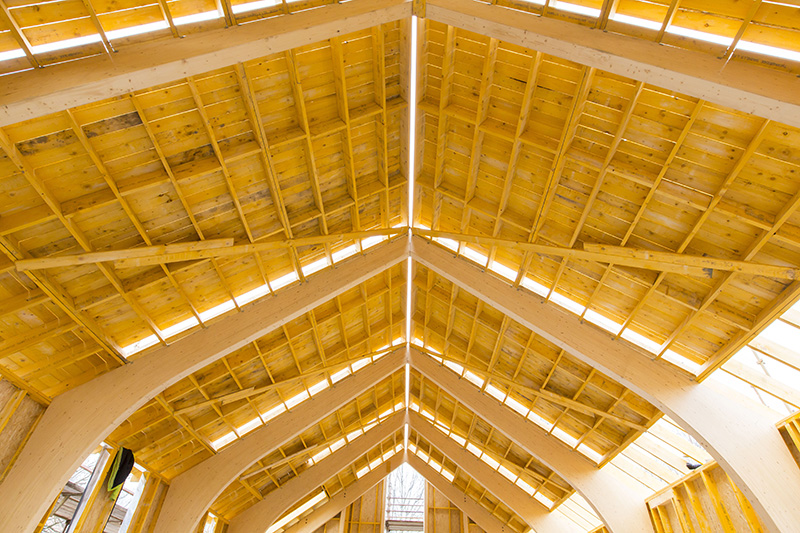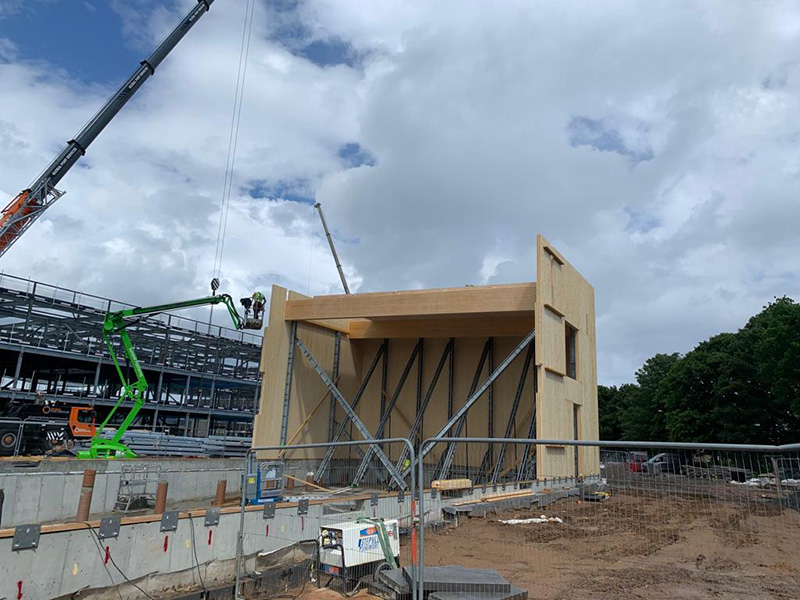
LENZIE-based Fleming Timber Structures is flying the flag for timber frame by demonstrating how the material can be used successfully in the construction of a wide variety of buildings.
While timber frame is traditionally associated with volume housebuilding, Fleming specialises in bespoke projects encompassing everything from schools and community centres to commercial buildings and hospitals.
Fleming Timber Structures is a third-generation family business which celebrated its 60th anniversary last year.
The organisation started out primarily supplying smaller timber kits in the 1970s but has grown substantially and today counts several Tier 1 contractors among its client base including Morrison, Morgan Sindall, Kier, BAM, and many others.
The business prides itself on developing strong relationships and has a hugely experienced workforce, specialising in the design, manufacture, and erection of structural timber frame, roof and floor cassettes, and mass timber (glulam/CLT) structures.

Pre-construction manager Euan McDermott and technical commercial manager Paula Thompson told Project Scotland that the company stands out by adopting a customer-focused approach and taking on bespoke and often complex projects.
“A lot of timber frame companies will focus on volume housebuilding,” Paula explained. “They have frame making machines that manufacture panels, which can often restrict the panel, height and width.
“At Fleming, we still work on benches in the factory, which means we can build virtually anything. We’ll do I-joist panels, chunkier timber panels, we manufacture our own pozi joists, all kinds of floor and roof cassettes, and various mass timber products. Sometimes we’re sending panels out of here that are six metres tall.
“We (primarily focus on) the more specialist stuff, especially when it comes to glulam and CLT. “We’re delivering the structure for our fourth crematorium with the same client which incorporates a timber frame combined with feature glulam trusses to create vaulted ceilings. We’re putting that together in the factory, where we’ve got the tools and the skillset. We like to specialise in something that’s different and a challenge; something that not everybody can take on.
“We’ve also recently completed a number of CLT projects, including with Kier at Currie Community High School. It’s mostly a steel building but the swimming pool is a combination of CLT and glulam. Between the chunky glulam beams and the CLT, it looks really impressive. These panels were 8-11 metres in height. We had to look into different types of propping. It was a challenge but an exciting one.”

With the industry shift towards sustainability, Euan claimed timber frame is a natural solution for a wide range of different buildings. One of the barriers currently, however, is the lack of knowledge about the material and its capabilities.
“In some regards, it’s a bit unknown,” he explained. “Not every engineer is a specialist in timber. The non-domestic side of timber frame is where we are – schools, community centres, crematoriums. We’re happy to use and incorporate different technologies to optimise designs.”
As most of Fleming Timber Structures’ work is repeat business, the firm has built up an established client base which is comfortable in engaging the company on projects from an early stage. This, according to Paula, is crucial if you want to get the most out of timber frame.
“If clients come to us early to discuss the projects, we can advise on the design, identify any potential issues early, and make it less difficult to build. People we’ve built up relationships with know our level of expertise and where we can add value. There’s that level of trust where they will come to us early or even if they’re just tendering for a project. They’ll ask our advice on what we would do or how we could make it easier in terms of buildability, which can offset costs on site.”
Examples of Fleming Timber Structures’ work can be found in the Royal Edinburgh Hospital, where the business delivered and erected the timber frame, and was also responsible for the design and installation of the insulation to the walls and roof throughout the building. An ongoing project is the new Maybury Primary School in Edinburgh, a two-storey low-energy school meeting the Passivhaus standard. Fleming has supplied the timber frame, including timber floor cassettes, timber roof cassettes, Larsen truss timber walls, as well as CLT lift shafts and glulam beams for larger spans.

Elsewhere, Fleming has delivered innovative timber solutions for the net zero Bridge Street Depot in Girvan for South Ayrshire Council, Scotland’s first public Passivhaus nursery in Blackridge, and a huge feature glulam canopy for Balfour Beatty in Leamington Spa during the pandemic as part of a move to establish additional testing and research facilities.

While construction has a reputation for having a transient workforce, Fleming is bucking this trend with a core of long-serving employees, many of whom have been in the business for decades. However, with skills shortages rife across the wider industry, the company remains committed to investing in the next generation by taking on apprentices annually.
“Over 10% of our employees are trade-based apprentices,” Euan revealed. “I’m absolutely passionate about that. There are nine in the business currently.
“They get exposure to the factory and on site so it’s a good grounding. I feel we’re doing our bit. We do a lot of school engagements. Whatever age you are, you’ve got to look at construction. It’s not just about digging holes and building walls. If you’re a big gamer, that’s great because BIM’s come in and everything’s digitalising so the range of roles within construction is always increasing and developing.”

Euan described the gender balance in construction as an area where focus is required, especially at site level. For Paula, who left school at 18 with no specific knowledge or pull towards construction, the key is highlighting the breadth of opportunities available.
“I really loved technical drawing at school, so when I saw a job advertised for a trainee timber frame design technician (I was interested),” she said. “It asked ‘can you use AutoCAD?’ I had done that in my Highers and thought it sounded great, so that’s how I ended up in the construction industry. I had no idea timber frame was a thing! It’s a great job and has afforded me a fantastic career.”












